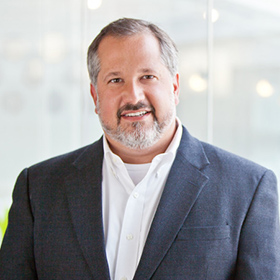The mention of the word endowment often evokes images of stately universities, art museums, and hospital wings, but rarely is it associated with social change organizations. This is especially true when it comes to organizations led by people of color.
A Bridgespan Group analysis of the investment income of 56 social change nonprofits—organizations such as the Southern Poverty Law Center, Planned Parenthood Federation of America, the Innocence Project, and the Children’s Defense Fund—found that, on average, the endowments of organizations led by people of color were nearly four times smaller than those of white-led organizations, and their average percentage of revenue was less than half. If social change organizations currently get just a thin slice of the total endowment pie, Black-led nonprofits are getting the crumbs.
It’s time for that to change. Social change leaders can start conversations about endowments by first identifying their most trusted donors. That trust is central, because endowments for social change nonprofits amount to much more than money. They are the purest example of trust-based philanthropy we can think of, representing a transfer of power from donors to doers. Such an act can be transformative for social change organizations, especially Black-led ones.
Although there are huge shifts in donor mindsets and practice needed to encourage endowment giving, the hurdles are not insurmountable. Here are steps social change leaders can take to open the dialogue:
- First, be prepared and make the ask. You don’t get if you don’t ask. Believe in yourself and your organization, and don’t be afraid to raise the topic with trusted donors. Frame the need for an endowment in terms of setting your organization up for long-term success.
- Be bold—price with pride. Endowments should be large enough to generate revenue that will make a measurable dent in how you operate, so have a number in mind. For example, a planned 5 percent annual draw should probably be close to 60 percent of your organization’s budget. Demonstrating your understanding of financial sustainability and your organizational capacity will help donors see you as worthy of this type of investment. Ultimately, the closer you can get to 100 percent of actual current budget, the better.
- Promote your proximity. Elevate your relationship with your community as an asset. Organizations that are well respected within their communities are able to elevate locally driven solutions in a way funders or other organizations that are more nationally focused cannot. Your ability to articulate the critical role your organization has played within the community and the trust you’ve earned from folks within that community should be communicated as the important asset that it is.
- Prioritize infrastructure as critical to impact. Reinforce the logic that, just like in the private sector, investing in your staff, systems, and technology will make philanthropic investments go further. Donors can be reminded that a healthy endowment will help build your organization in a way that mirrors the impact it has within the community.
- End “philanthropic sharecropping.” Too many organizations have relationships with donors who give them just enough funding to get by for the next year but no more. These donors may hesitate to direct large gifts your way as they question your ability to absorb large capital flows. You can push back, because this is where endowments really are magical. With endowments, the equation is not about spending $10 million or more; rather, it is about what that $10 million would generate: half a million in recurring revenue, year after year. Consider demonstrating how that half-million would free up time now spent raising funds—time that could instead be directed to supporting programs or building sustaining internal capacity.
- Tap into your board’s networks. Think deeply about who board members might know and could connect you to, even if you don’t have the contacts yourself. That is part of their job. They can help change the narrative and start normalizing these conversations. The more the board talks about endowments in boardrooms and outside conversations, the more likely it is that donors will consider endowments as a giving option.
- Think long term. Be able to articulate the following: What is the issue you are trying to tackle going to look like 10 or 20 years from now? How is your organization uniquely positioned to take on that challenge –not only today, but also in those future tomorrows? And how can your endowment give you the room to plan for the future?
The bottom line: If social change organizations, particularly those that are Black-led, were to receive even 25 percent of their revenue from endowments rather than spending all that time chasing dollars, they would get closer to achieving their potential. The pandemic and compounding crises of recent years have spurred a rise in philanthropic pledges to racial and social justice issues and organizations. The conversation has begun. It remains to be seen if action will follow intention, and how much action will be sustained. Discussing endowments can be a concrete way to hold funders accountable on those intentions and help sustain action in perpetuity. This is a moment of opportunity. Seize it.
William Foster is managing partner of The Bridgespan Group, based in the Boston office. Darren Isom is a partner in Bridgespan’s San Francisco office.


